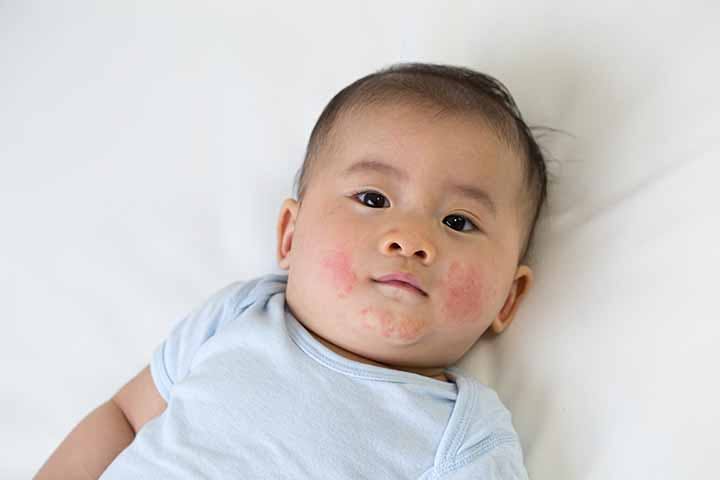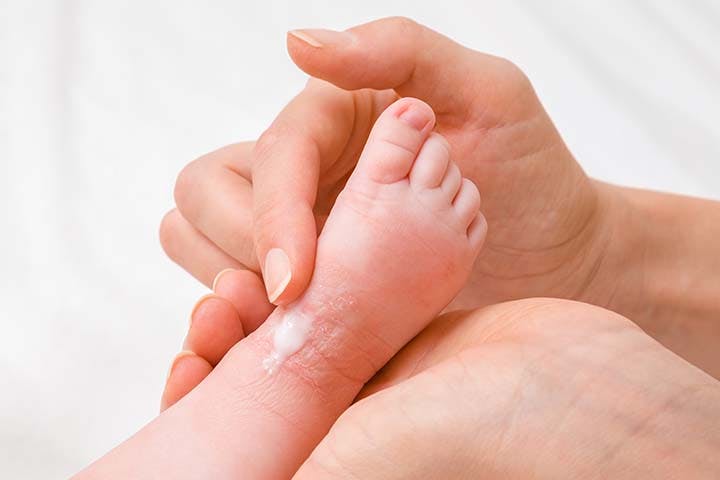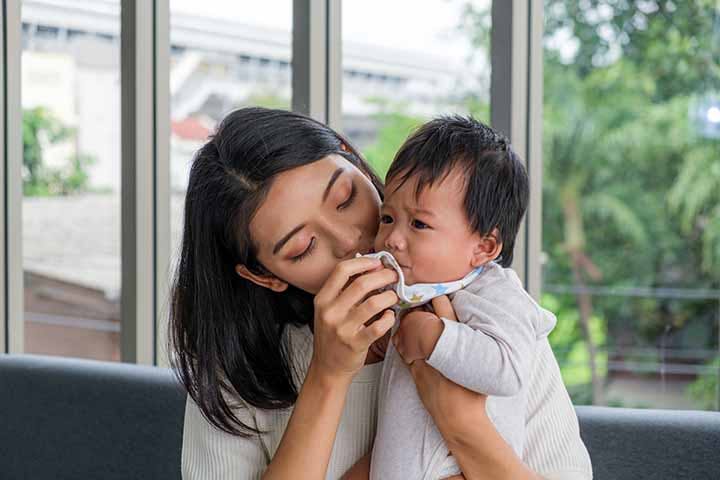Managing Eczema in Babies and Young Children
Published | 5 min read
It’s normal for eczema in babies to occur. If left untreated, the condition can significantly impair their quality of life. Here’s how to manage it.

Eczema in babies and or children is very common. It refers to a group of skin conditions that cause symptoms like itching, redness, dryness, and inflammation. It can also be mistaken for a rash or other skin disorders. Here are the different symptoms and causes of eczema in babies or children, as well as ways to improve the pain and discomfort associated with each type.
3 Common Types of Eczema in Babies

Clinically, eczema is a skin inflammation with multiple external and internal factors. The skin lesions can present in various forms and usually have a considerable number of papules, which can leak fluid out of blood vessels and into tissues. They associate with severe itching. A recurring condition, eczema in babies or children characteristically has overlapping and alternating acute and chronic phases.
In Traditional Chinese Medicine (TCM), the occurrence of eczema in babies or children relates to the frequent consumption of seafood or spicy foods or the experience of emotional imbalances led by hormonal changes during a woman’s pregnancy. “These can lead to internal liver heat and heaty pathogens that pass to the child in the mother’s womb,” explains Eu Yan Sang TCM Physician Luke Yau Wai.
1. Atopic dermatitis
The most common type of eczema is atopic dermatitis. It is caused by an allergic reaction and can persist for a long time. In babies, this skin condition starts during infancy or early childhood. Babies with a family history of eczema, asthma, or hay fever are more vulnerable to developing this condition.
Symptoms: Atopic eczema in babies or young children presents with rashes, redness, extreme itching, dry or scaly skin, and open, weeping, or crusted sores. Infants and toddlers mostly experience symptoms of atopic dermatitis on areas of the body that are easy to scratch or rub as they crawl — particularly the face, elbows, or knees. A baby’s skin can also thicken from excessive rubbing or scratching. This skin lesion is called lichenification.
Treatment: The severity of your child’s condition can help you identify suitable treatment options. Ointments and gels which moisturise the skin can help to alleviate mild cases. Acupuncture and daily herbal baths can also help. More severe cases of eczema may need phototherapy or medications that suppress the immune system.
2. Nummular eczema
The cause of nummular eczema is not known. However, exceptionally dry or sensitive skin and trauma to the skin due to scrapes, chemical burns, and insect bites can trigger this condition. It may also be a reaction towards other forms of eczema and their triggers.
Symptoms: Nummular eczema type affects people of all ages, including babies or children. It generally presents with typical coin-shaped lesions on the torso and limbs, itching or burning sensation on the skin, lesions that are crusted or ooze liquid, and scaly and inflamed skin that appears brown, red, or blushed.
Treatment: Nummular eczema can improve with the right treatment. Usually, mid-to-high potency topical corticosteroids and antibiotics help to treat the condition. “If your child has eczema patches that weep or ooze, you can apply an astringent compress to dry the area and to clear up infections caused by the Staphylococcus aureus bacteria,” says Physician Luke.
3. Seborrheic dermatitis
Like nummular eczema, this chronic condition can affect people of all ages, including infants and young children. This eczema type links to the large number of oil-producing glands present on certain areas of the body, including the nose, scalp, and upper back.
Symptoms: Babies usually experience seborrheic dermatitis on the scalp called ‘cradle cap’. This condition presents with scaly, greasy patches all over the scalp, which can also develop on your baby’s bottom. You may mistake it for a diaper rash.
Treatment: Treatment for the condition aims to reduce itching, remove, and calm the inflammation that causes redness and swelling. In mild cases, emollients such as mineral oil or petroleum jelly can help loosen the scales. A skincare routine that includes washing affected areas with a zinc-based cleanser and applying a moisturiser is recommended for more severe forms of seborrheic dermatitis. If the condition is very severe, a dermatologist may prescribe the intermittent use of immunosuppressant medicines or topical corticosteroids.
Treating Eczema in Babies or Children with Eastern Medicine
According to TCM, three conditions contribute to eczema, each requiring a specific treatment protocol:
- Wind-heat: Treatment for eczema due to wind-heat will prioritise clearing heat and dispelling wind. You can use weeping forsythia (Lianqiao, 連翹) and Dictamni Cortex (Baixianpi, 白鮮皮).
- Damp-heat: You can address this condition by using herbs like Scutellariae Radix (Huangqin, 黃芩) and Amur cork tree bark, (Huangbai, 黃柏) to clear heat and eliminate dampness.
- Weak spleen: Herbs like Pseudostellariae radix (Taizishen, 太子參) and white atractylodes rhizome (Baizhu, 白术) can invigorate qi and strengthen the spleen.
Separately, the consumption of Si Shen Soup and Bu Qi Jian Zhong pills may improve your baby’s digestive health and support eczema treatment. A herbal mixture for bathing is also suitable for clearing heat and relieving eczema symptoms in babies.
Lifestyle Tips to Prevent an Eczema Flare-up

Lifestyle changes can also help in the care and prevention of eczema. Physician Luke shares a few essential tips:
- Avoid washing affected skin areas with soap, hot water, or other irritants.
- Never use a potent detergent to wash your baby’s clothes.
- Ensure that affected areas of skin are clean and well-ventilated.
- Wipe off milk and food stains as well as excessive sweat immediately.
- Prevent scratching by applying a moisturising body lotion to dry skin and lesions.
Many treatments are available to manage eczema in babies. For example, medication and the adjunctive use of herbal remedies can help to alleviate eczema’s uncomfortable symptoms. However, it’s advisable to talk to a healthcare provider and a TCM practitioner beforehand so that you can have a proper diagnosis and treatment plan.
References
- National Eczema Association. Atopic Dermatitis in Children. [Accessed 19 November 2021]
- National Eczema Association. Nummular Eczema. [Accessed 19 November 2021]
- National Eczema Association. Seborrheic Dermatitis. [Accessed 19 November 2021]
- BMC. 2021. Integrated Chinese and western medicine interventions for atopic dermatitis: a systematic review and meta-analysis. [Accessed 19 November 2021]
Share this article on






